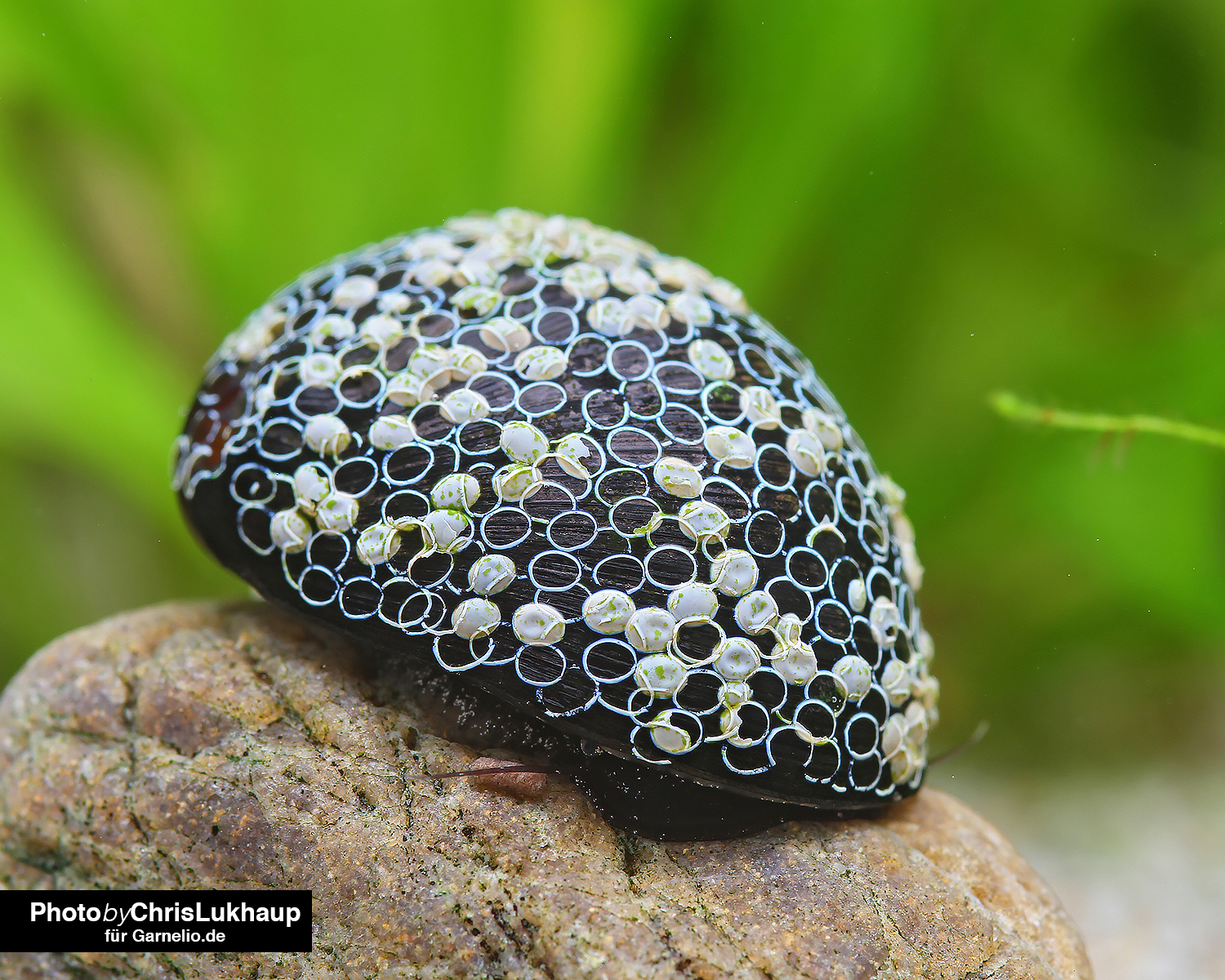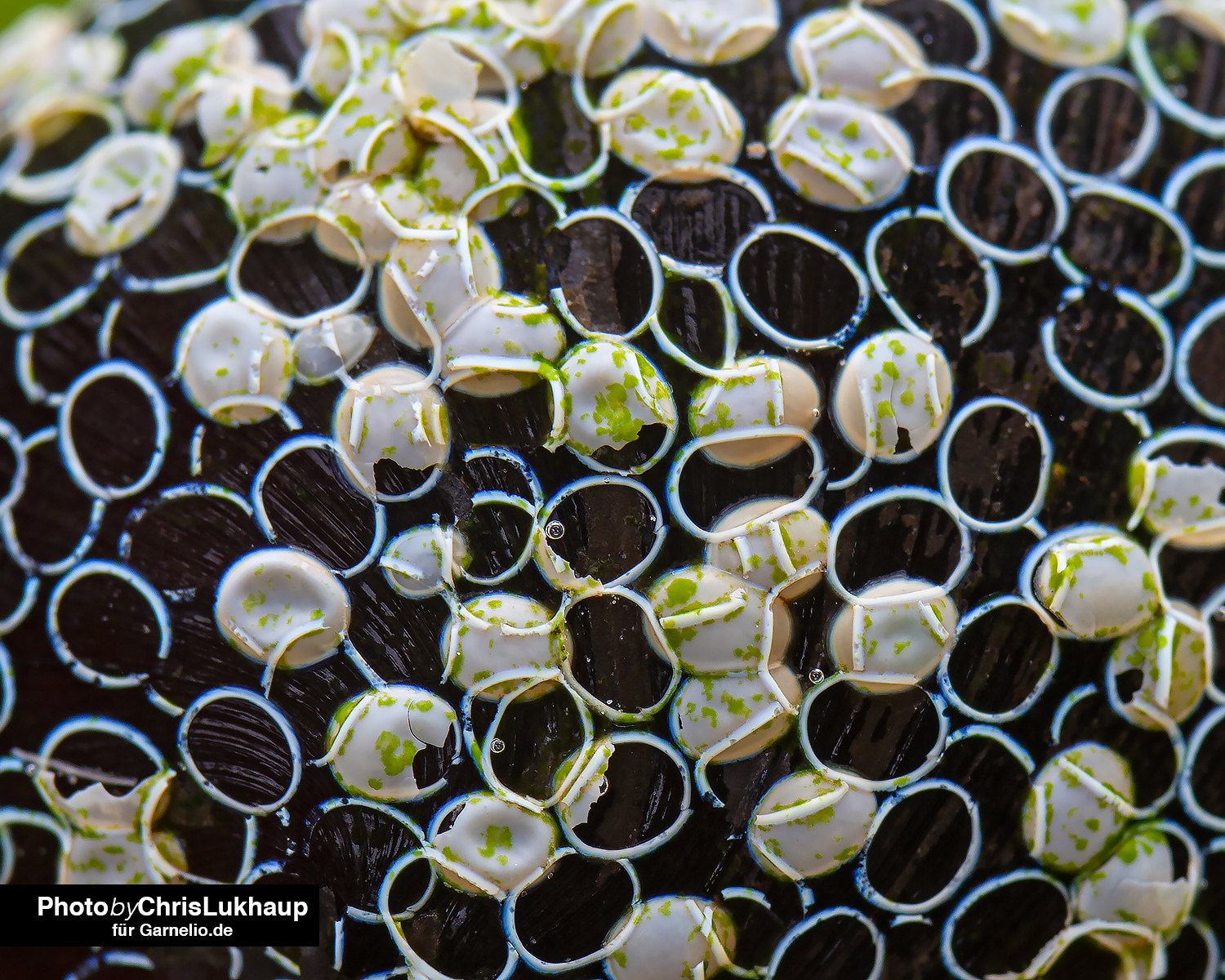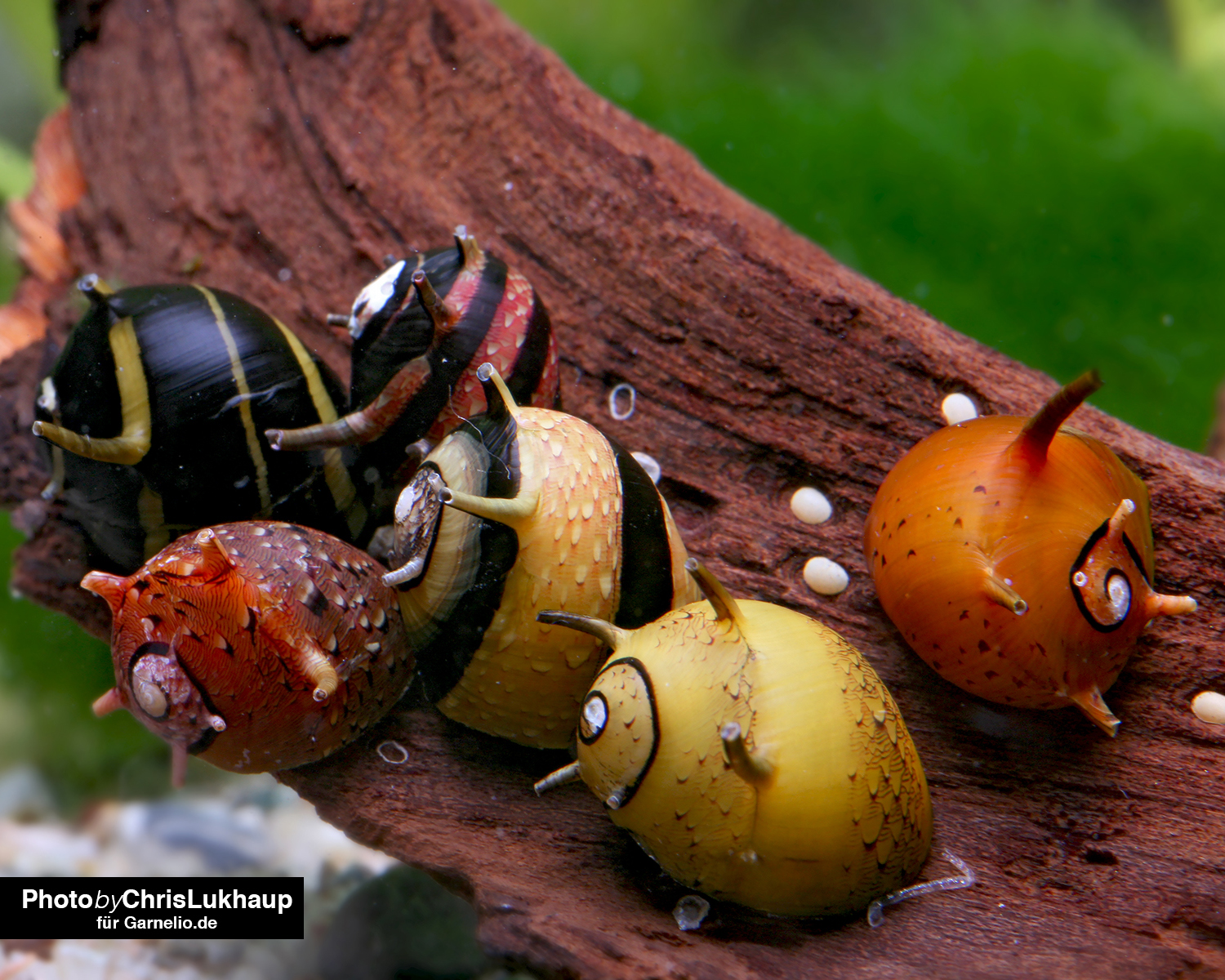Remove racing snail eggs in the aquarium
The racing snails, limpets and staghorn sn ails, which are so popular as algae eaters, are not only useful, but also thanks to their unusual shell shape and their sometimes really great colors and patterns, they are a nice co-stock in the aquarium. However, if you get a group of racing snails into the aquarium, you will almost certainly find strange light beige to white oval spots on all possible surfaces in the aquarium at some point ... what is going on there?

neritids as robust algae eaters
The common Neritidae in aquaristics are also called racing snails, mermaid snails or barge snails. They occur in nature in the lower reaches of rivers up to the estuary, from soft water to brackish water they tolerate everything. They are - once acclimated - very long-lived and robust snails, which by their tireless rasping work very effectively free the aquarium from algae deposits and unsightly biofilms. In aquaristics, neritids have been reported to live 10 years or more under good conditions.
Reproduction of racing snails
often as a further sales argument is brought forward that racing snails and Co. cannot reproduce in the aquarium. This is true as far as it goes, but there is a big but ... Racing snails, limpets and staghorn snails are nevertheless quite productive if kept well and given plenty of food, and they also try to reproduce in the aquarium. What the aquarium snails do not know - the so-called veliger larvae hatch from their egg cocoon, but unlike in nature, they have no chance to reach the sea in the freshwater aquarium, and they die after a few days in freshwater then unfortunately.
Appearance of the egg cocoons
Mermaid snails are bisexual, which means that there are males and females. After mating, the females lay light-colored, usually oval egg cocoons, in which up to 20 eggs lie dormant, depending on the species. In larger nymph snails such as limpets (anthracite nap snails) or racing snails the cocoons are somewhat larger with a length of about 1-2 mm, in staghorn snails they are significantly smaller.
Eggs, eggs, eggs
the fact that no young come up, however, does not stop the mermaid snails from continuing to egg and stick their bright egg cocoons to all kinds of solid surfaces. Not even the shells of their fellow snails are spared, on the contrary - the round shapes seem to invite the other snails to glue them full with their oval racing snail eggs. Often you can see mermaid snails with a "pearl necklace" of egg cocoons around the lower shell edge, but also more extreme cases occur, as you can see well in the picture
Also at roots or stones, at the aquarium pane and at the decoration one can often discover the bright egg cocoons. With plenty of food, the females are extremely productive and often egg everything. removing racing snail eggs - from the aquarium pane The eggs of racing snails, staghorn snails and limpets can be easily scraped off the aquarium pane with a sharp blade. This should be done with care to avoid scratching the glass! Under no circumstances should the metal scraper come close to the silicone seam.
Removing snail eggs - from roots, stones and decoration
The best way to remove the stubborn egg cocoons from uneven aquarium decoration and from roots and stones is to use a wire brush or the thin side of a gravel spatula. They can also be scraped off surfaces with a fine scalpel or similar instrument.
Remove racing snail eggs - from snail shells
On the snail shells you should simply leave the eggs of the racing snails and Co. It would be associated with far too much stress for the snails, and you would also destroy the protein layer of the shell that protects it from corrosion when scrubbing it off
Removing racing snail eggs - sitting out
When the larvae have hatched, the cocoon slowly dissolves, after some time you will only see an oval thin rim, after even longer time this will also eventually disappear. So if the optics in the aquarium or especially in the aquascape is not the top priority, you can also simply come to terms with the egg cocoons, they dissolve gradually just by themselves.

Separation for prevention?
Since racing snails are not hermaphrodites, but bisexual, since there are females and males, you can theoretically also simply separate the sexes and thus prevent excessive egg production. In practice, however, the separation of males and females is difficult - unfortunately, there are no external characteristics, according to which one could clearly identify the racing snail as a male or female animal. However, the animal that sits on top during mating is always the male
Unfortunately, females can store the sperm of males for some time, so even female racing snails in female-only tanks continue to lay egg cocoons for a few weeks. However, after some time this stops and then you can enjoy an egg-free aquarium
